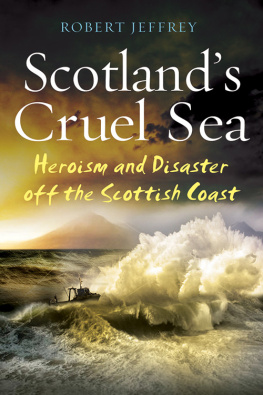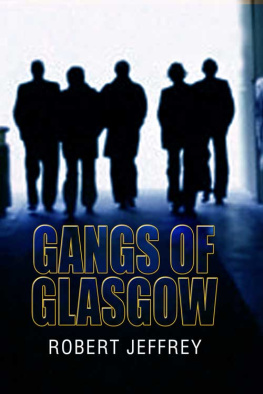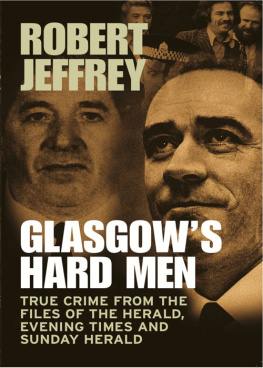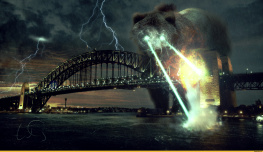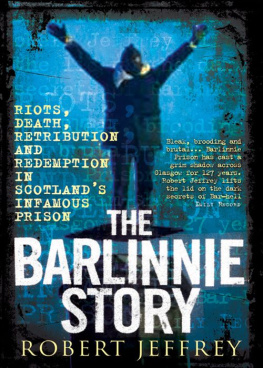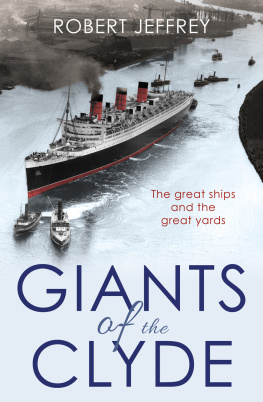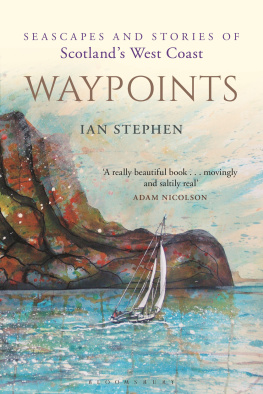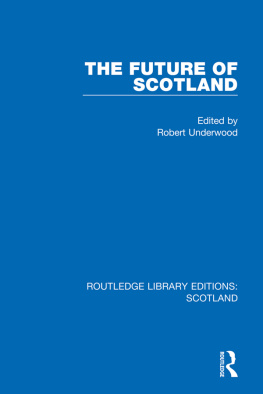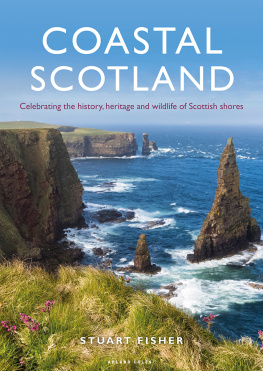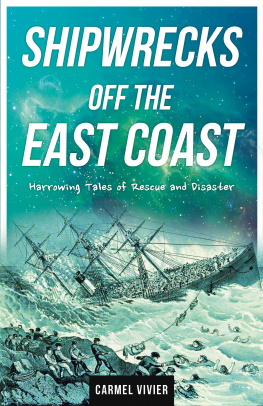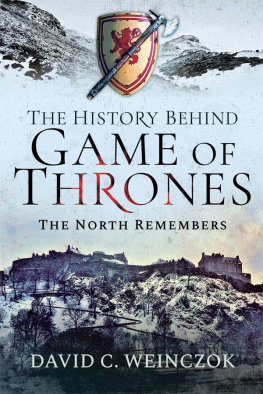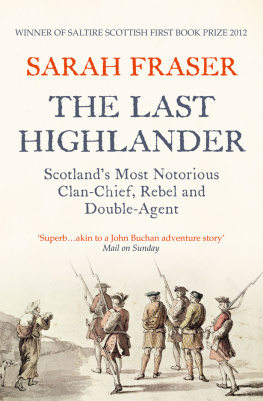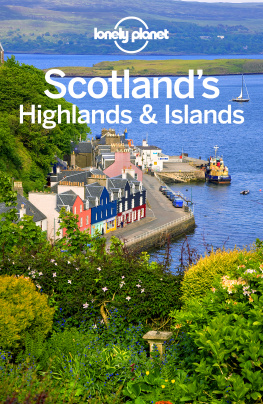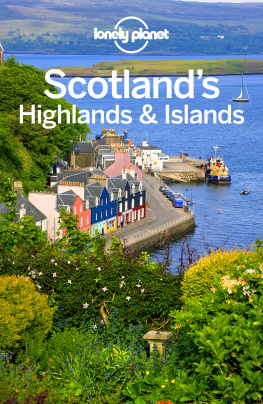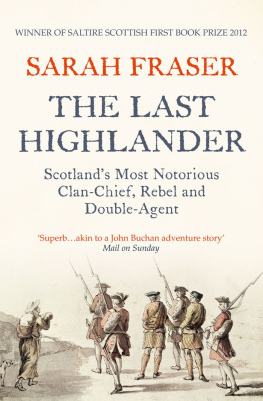
Tom Bone, Ray Bulloch, Ronnie Brownie, Ian Bruce, Jim Campbell, Jamie Campbell, Paul Drury, David Frost, Dr Grant Jeffrey, Dr John Riddell, Anne Riddell, John Linklater, Forbes Ferguson, Freddie Gillies, Stuart Fyfe, Dr Stuart Jeffrey, Stuart Irvine, Sylvia Irvine, Nelson Norman, Bill Pye, Ronald Ross, Tommy Ralston, John Steele, Noreen Steele and the staff of the Mitchell Library, Glasgow.
This book is dedicated to the memory of those, famous and unknown, who died in Scotlands cruel sea. And those who tried to save them.
CONTENTS
There are few more pleasant ways to pass a summer afternoon than to stroll along a deserted beach or walk a seaside cliff path. Scotlands rugged coastline has plenty of both, be it vast sweeps of glittering sand such as Sandwood Bay in remote Sutherland or the north-east cliffs of Buchan and Fife. You could have that stroll many miles from the nearest town or village. Or you could be on the doorstep of either of the countrys two largest cities. No matter if you gaze out to sea, in summer calm or winter gale, you are probably looking at the site of a shipwreck. Beneath our seas lie around 5,000 known wrecks, with countless others yet to be discovered.
A shipwreck map produced in the spring of 2014 by the Royal Commission on the Ancient and Historical Monuments of Scotland and Historic Scotland dramatically illustrates the toll taken by Scotlands cruel sea. The map is part of a necessary long-term project by marine archaeologists which aims to protect our underwater heritage from damage by offshore wind turbines or tidal energy projects.
As marine archaeologist George Geddes remarks: The map helps us understand what might be lost if wreck sites are disturbed. We dont want to destroy a potential Mary Rose. Its value to the nations heritage apart, the map reveals the problem of a writer faced with telling the tales of tragedies in our seas he or she is spoiled for choice. No matter how much research and work goes into the project, only a fraction of the dramas can be told. There are no rules on what should go in and what should be left aside. This book is not intended to be definitive or comprehensive. The choice of the stops on a journey round Scotlands dramatic coastline is idiosyncratic. However, those with an interest in maritime matters will have a shipwreck tale or tragedy of special interest. If yours is not in this book, I apologise. Perhaps it could be told in another volume!
Robert Jeffrey
1
BRIGTON AND BELFAST
THE BROKEN LINK
The only one of the many disasters and tragedies told in this book that I have even a peripheral involvement in is the sinking of the Princess Victoria in the Irish Sea in a violent storm in January 1953. My maternal grandparents had come to Scotland from County Armagh, and like hundreds, if not thousands, of folk who had made a similar pilgrimage from the poverty of rural Northern Ireland to Scotland in the hope of a better life, they had settled in the district known as Brigton (more properly referred to as Bridgeton by those who had already achieved what we today would probably call upward mobility). At every opportunity many of these folk returned to Ireland to keep in touch with family and friends, ensuring that the ferries that plied the seas between the two countries could be relied on to be carrying a large contingent of Brigton folk at any time of the year.
My grandparents and sundry uncles and aunts settled in Main Street, a short walk from Shawfield Stadium, a dog track venue and, in the fifties, also the home of Clyde FC, who are now domiciled in the new town of Cumbernauld. Cumbernauld was a place where those decanted from the inner city could take a lonely wander around featureless housing estates then largely devoid of the cosy, if deprived, companionship available in even the worst slums of Gorbals and Brigton. Many writers ignore the horrors of outside toilets, substandard housing and the volume of crime and wickedness that were a feature of these slums known worldwide. Rose-tinted spectacles were in demand as some scribes looked back on the old days in Glasgows deprived neighbourhoods. However, Cumbernauld may have provided better housing, but it could be the joyless sort of place memorably described by one Scots comic as a desert with windaes.
However, the strong local spirit of Brigton infused the thousands who gathered in Shawfield Stadium to watch Clyde on the day of this disaster. But any optimism on the terraces about a pleasant afternoon of football was, as the match progressed, cruelly dismissed. At the game I was in the company of my father, who, perhaps with a nod in the direction of his Brigton relatives, was a fervent supporter or at least as fervent as a highly intelligent, well-rounded and laid-back man could be of the Bully Wee, as Clyde were known. For him it was a home match; for me an away game, as I was a follower of the now defunct Third Lanark, who played in Cathkin Park, a couple of miles away from Shawfield. The fact that when Clyde were playing away, Thirds would be at home and vice versa meant we could go to each ground on alternate Saturdays. No family feuding! I remember nothing of the game itself, but one incident is never to be forgotten. It was announced over the public address system that there had been a disaster in the Irish Sea that stormy afternoon. There was no detail it was far too early in the story but the Brigton Irish knew full well that relatives and friends could be in trouble and many left the ground to seek further news. Football was of no importance after that. More than a hundred people lost their lives when the Princess Victoria went down.
When it went into service, from its home port of Stranraer, with London, Midland and Scottish (LMS) railway in 1947, the ferry was at the cutting edge of maritime technology. Although operated by the railway company, the vessel was owned by the British Transport Commission and was the first purpose-built roll-on roll-off ferry of its kind to serve in British coastal waters. Its route was from Stranraer to Larne for Belfast. The concept of cars and freight lorries simply driving on and off ferries through gigantic stern doors into huge, echoing and often foul-smelling holds is now commonplace. These days this method of loading is used world-wide in the ferry business and is even in use in fast catamarans as well as large ships, with car decks of several storeys.
Few remember or look back with any affection on the slow progress of loading in the days when cars were hoisted on cranes and dropped onto the open decks of ships. Roll-on roll-off is, in the modern idiom, a no-brainer. It was the future of car ferries.
The Princess Victoria was Clyde-built at one of the most famous and most innovative yards in the world: Denny Brothers in Dumbarton. As well as being involved in building some of the most famous ships in the world, including the Cutty Sark and the American river boat Delta Queen, this remarkable firm was also a pioneer of hovercraft and was even involved in flying boats for a short time. So when the Princess Victoria, or Yard Number 1399, was launched on 27 August 1946, it immediately became part of Scottish maritime history.
There had been four previous ships of the same name and her immediate predecessor had been sunk by a German mine in the Humber during the Second World War. On the day of the launch the usual champagne corks were popped and management, workers and their families toasted a bright future for this new maritime development, the roll-on roll-off ferry. Any launch on the Clyde is a happy, optimistic event; even today, when most of the tonnage gliding down the greased slipways belongs to warships, there is something of a party atmosphere. You never forget the sight and sounds of your first launch and the years of work that have produced an impressive ship, so its first taste of the water is something special.
Next page
